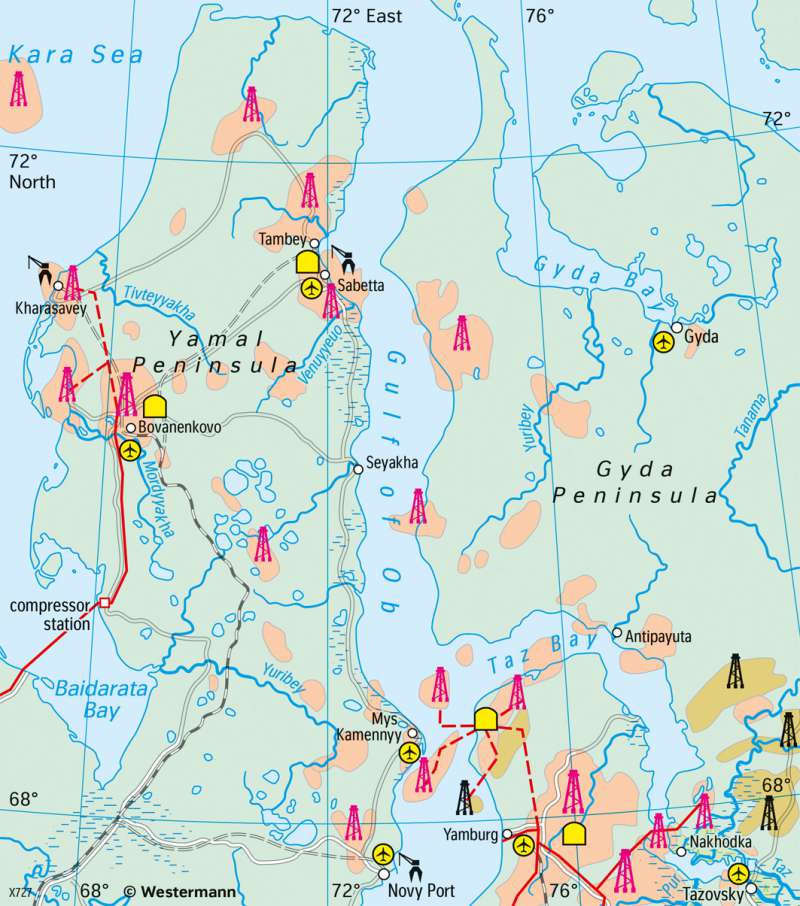Northwestern Siberia - Extraction of natural gas
Regional development
978-3-14-100890-6 | Page 115 | Ill. 3

Overview
Yamal is located in the north of Western Siberia between the Obbus and the Kara Sea. The 750-kilometre-long and up to 240-kilometre-wide peninsula belongs to the Yamal-Nenets Autonomous Okrug. The indigenous Nenets traditionally live from reindeer husbandry, fur trapping and fishing. The lowlands with many lakes on Yamal are covered by subarctic tundra in the north and forest tundra in the south. The extensively marshy region is shaped by permafrost. Natural gas deposits have been developed there since the 1980s, the largest of which - and also one of the largest in the world - is the Bovanenkovo natural gas field. A railway owned by the energy company Gazprom, is used to supply thousands of employees at the extraction, processing and distribution sites. It is the northernmost railway in the world. Beside the railway, airplanes also connect the peninsula with the rest of the world. There is also a seaport in the Sabetta settlement on Yamal, which can be accessed by tankers.
The Bovanenkovo gas field
The Bovanenkovo region is located in the west-central part of the Yamal Peninsula, about 30 km from the west coast of the peninsula and on the left bank of the Zyoacha, a tributary of the Murtyyacha. It has an annual average temperature of -8°C with a minimum of approximately -25°C in February. The gas field has been developed by Gazprom since 2012. By 2017, two 1260 km pipelines had been completed, running through the Baidarata Bay of the Kara Sea to Ukhta. More natural gas pipelines and railway lines are under construction, and the planned maximum production has not yet been reached (96.3 billion m3 in 2019). The planned gas production capacity is 115 billion cubic metres per year. In future, gas extraction is even expected to reach 140 billion cubic metres per year through the development of Neocomian-Jurassic deposits. Three gas fields were commissioned in 2012, 2014 and 2018. So far, natural gas reaches Germany via three transport routes: The traditional transgas route runs via Ukraine, Slovakia and the Czech Republic, the Yamal pipeline (Northern Lights) via Belarus and Poland, and the Nordstream pipeline through the Baltic Sea.
Due to the gas production and the new buildings, the region is affected by local environmental damage. Additionally, the gas fields were built in an area where reindeer herds cross. The local population now has to walk through the plants and gas fields when using their traditional routes.




